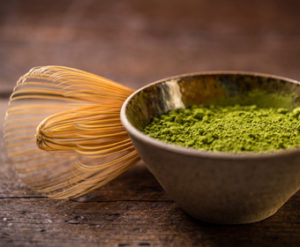
Matcha Facts and Myths
With its amazing properties and many centuries of history matcha tea is truly the stuff of legend. Trouble is, legends leave a long trail and, over time, fact and fancy get twisted up. In matcha’s case, there are definitely some Matcha Facts to know and some Matcha Myths to be wary of.
Matcha Facts
- Matcha tea has Chinese roots dating back to the 7th and 8th centuries.
- Originally called “whipped tea,” it was often used for medicinal purposes.
- Japanese Zen Buddhist monks discovered it during 9th century visits to China.
- The matcha tea we love today was developed in Japan.
- Premium matcha is made from spring leaves which contain more of the uber-healthy amino acid L-theanine.
- Shading tea leaves from sunlight before harvest increases the chlorophyll that gives matcha its vibrant green color.
- Before the matcha leaves are powdered they’re called “tencha.”
- Matcha powder contains the entire tea leaf.
- Unlike regular tea, matcha contains ALL the nutrients the tea leaf has to offer:
- L-theanine amino acid: approx 2-3 %
- Antioxidants / catechins EGCG: approx 45-75 mg/g
- Chlorophyll, polyphenols, tannins
- Small amounts of fiber, protein, carbs
- Match tea caffeine encourages awareness and concentration without the caffeine jitters.
- Matcha caffeine’s gentle boost lasts for a few hours.
Matcha Myths
Matcha tea contains 137x more antioxidants than regular green tea
This is the big one, the sad myth you see quoted everywhere. Sure it sounds good, but this is NOT what researchers actually discovered. The study so many retailers are fond of quoting actually found matcha tea contains 137x more antioxidants than one single brand of green tea and just 3x more antioxidants than all the other green teas.
All matcha is hand-picked
High quality matcha tea is hand-picked and costs more. Lower grades of matcha are often harvested by machines that allow low quality leaves into the mix. Ceremonial and premium grades should be strictly hand-harvested ensuring those products contain ONLY the best tea leaves.
Matcha is the same as green tea powder
Unless the tea is precision processed as matcha powder it won’t have matcha’s uniquely abundant nutrient profile and simply won’t be a true matcha tea.
All matcha is stone ground
Nope. Our matcha is stone ground but low grade matchas are almost always pulverised in cheap ball and hammer mills which create nutrient killing heat. Only the best Japanese producers still use stone grinding. Along with shading, hand-picking, steaming and air-drying, this labour-intensive process is the difference between high grade Japanese matcha and low grade knock-offs from China and Korea.
All matcha tea is created equal
Hardly. Matcha comes in lots of different grades and each grade comes in a variety of qualities. Most reputable retailers sell Premium, Ceremonial, Latte or Culinary grade matcha teas. Tea shops and juice bars will be familiar with “Bulk” grade matcha, while makers of nutritional supplements and skin-care products commonly use the lowest quality “Ingredient” grades.
Still have a question? We’d love to hear from you: contact us here.
Order your My Matcha Life® favorites today!